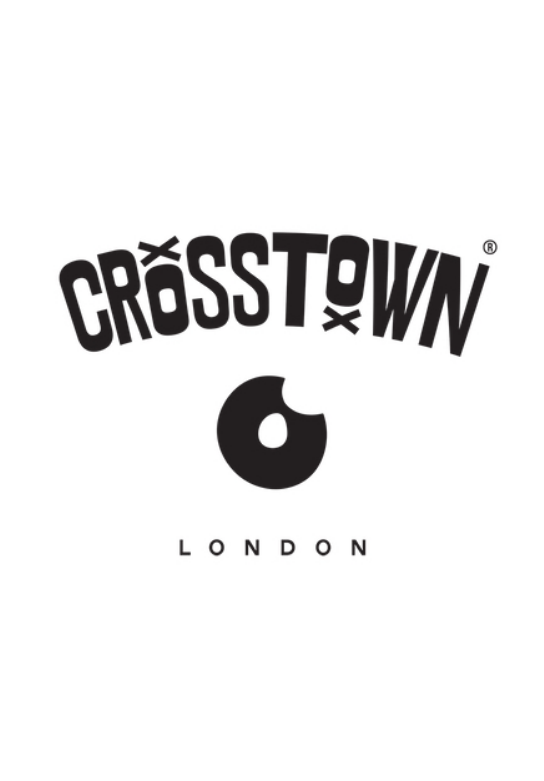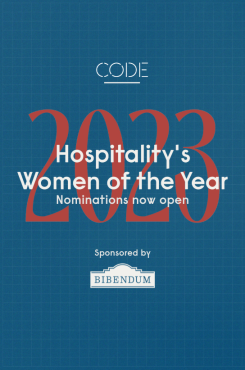Restaurant delivery – the new norm
Published 25 May 2020

Slerp and Crosstown founder JP Then talks about his experience as an independent operator with delivery and why he launched his own delivery platform, Slerp
It’s amazing how decisive you can be when you’re in survival mode. You gain instincts with the urge to react quickly, breaking down barriers in the process.
I’ve been operating Crosstown for over six years now, and up until a few weeks ago, the idea of delivering our doughnuts beyond an 8 mile radius from central London was off the cards – it was a no go zone. Expanding the reach always fell in the “too hard” or “let’s think about it next month” basket. Yet in a blink of a moment in March, we expanded it to over 13 miles in radius, almost a three-fold increase in area.
Alongside this, we came up with the idea of The Crosstown Collective, banding together with other like-minded operators to start delivering curated food boxes direct to peoples homes. I can tell you now, selling milk, mushrooms and focaccia was never part of the plan, but neither was becoming 100% reliant on online orders to stay afloat. Things have changed.
Lockdown has forced us to make big and bold decisions because the alternative of doing nothing is pretty much catastrophic. It’s hard to fathom that doing nothing and waiting for things to get better can actually be more damaging than trying something completely new and/or pivoting to something that has always been considered a stretch too far. In many ways, us operators have a completely free pass to break the norm for the new norm – when else do you have literally nothing to lose, because if you stand still, you lose anyway?
For many, the big bold leap is embracing online ordering and doing delivery. Despite it being around for years, the majority of independent operators still avoid it because it is not a focus, or was never part of the original plan. It seems to be commonly described as that “incremental revenue that doesn’t actually make us any money” – it’s like this annoying child on the P&L that just doesn’t quite contribute to the class in a positive way. This perception and attitude has to change.
Online ordering is now a hygiene factor in your F&B setup. It’s an essential requirement. It’s currently more important that your EPOS/till/card payment reader. It’s more important than every single bit of furniture in your restaurant. Online ordering now needs to be the focus and centre of your immediate plan for survival. It is demanded by all of our customers. Whether we like it or not, on-demand is in-demand.
Crosstown has already had a long journey with on-demand e-commerce. We were early adopters of Deliveroo, and launch partners with Uber Eats when they came to London. I was personally very intrigued by what these marketplaces were enabling – it really seemed like a positive move to make the physical space work harder and deliver (literally) what customers wanted. Equally, I was also very nervous and skeptical on what direction the marketplaces could take. On-demand e-commerce made a lot of sense in my head – I was an early believer that this was the way things were moving and it would be expected by our customers in years to come. But, not owning the customers journey, not owning the data and not having any control – that didn’t make any sense. This is where the idea of Slerp was born, a direct-to-consumer (d2c) company I founded in 2016, but only just launched to market in late 2019 after years of learning, testing and refining using my own business of Crosstown as the guinea pig.
Slerp essentially gives us operators a checkout solution for our websites, allowing us to transact directly with our customers. Slerp provides a range of unique settings that enable multi-site operators (such as Crosstown), to grow an online business on their terms – remaining in control and on-brand. It’s a b2b service. Many of the operators using Slerp also run the marketplaces in parallel as a complimentary solution – the dual approach can make a lot of sense. Crosstown still uses Deliveroo (we stopped Uber Eats in 2019) and it is undoubtedly a great revenue generator and reaches some of our customers, however, it is expensive with the commissions and the lack of control is tough to swallow. There is no question there is a place for the marketplaces, however, our own website powered by Slerp, is significantly more effective, more powerful and ultimately more profitable. We generate circa 3-4 times more revenue through our own website than we do through Deliveroo. Slerp commission is a flat 7.5% for everyone.
Of course, like anything, delivery comes with it’s challenges – it requires customer service when things go wrong (which they will), it is still delivered by a human (for now) who needs to find that complex address, and deep consideration has to be made into the menu offering, packaging and flow of kitchen operations. You also need to push your customers to your website and social channels. These aspects often regarded as outside our realm (the too hard basket), however, aren’t these the exact things that you would plan and consider for walk-in customers anyway? The customer service, the menu, the setting, the location and driving footfall?
We are all in survival mode. It’s the time to use that free pass and do something rather than suffer the consequences of doing nothing. Make the move to online ordering and embrace the fact that it is part of our new norm. On-demand is in-demand.
For more info visit Slerp




